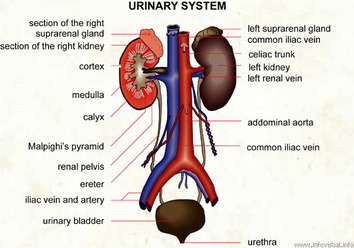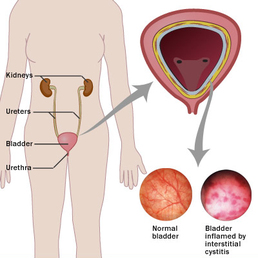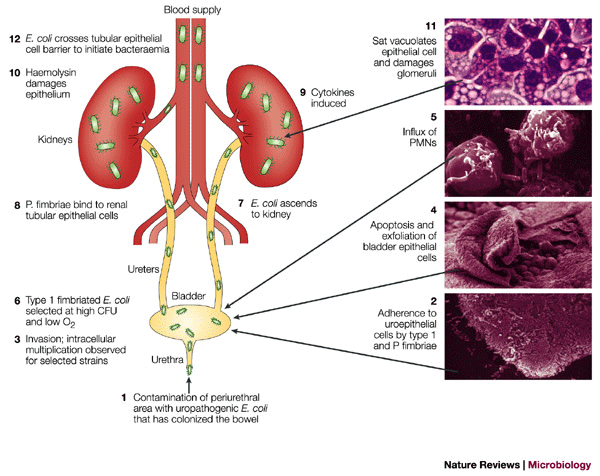Urinary System (General)
General Information
Things In You're Urine
Urine contains:
Terms
Nutrients Needed for a Healthy Bladder
- Body processes such as digestion and metabolism (when the body turns food into energy) produce wastes, or byproducts. The body takes what it needs, but the waste has to go somewhere. Thanks to the kidneys and pee, it has a way to get out.
- The kidneys are key players in the urinary tract. They do two important jobs — filter waste from the blood and produce pee to get rid of it. If they didn't do this, toxins (bad stuff) would quickly build up in your body and make you sick.
Things In You're Urine
Urine contains:
- water
- urea, a waste product that forms when proteins are broken down
- urochrome, a pigmented blood product that gives urine its yellowish color
- salts
- creatinine, a waste product that forms with the normal breakdown of muscle
- byproducts of bile from the liver
- ammonia
Terms
- kidneys: two bean-shaped organs that filter waste from the blood and produce urine
- ureters: two thin tubes that take pee from the kidney to the bladder
- bladder: a sac that holds pee until it's time to go to the bathroom
- urethra: the tube that carries urine from the bladder out of the body when you pee
Nutrients Needed for a Healthy Bladder
- Making some simple lifestyle changes‚ such as swapping potentially troublesome foods for more healthful items, can help you alleviate overactive bladder symptoms.
- We know that consuming the right amount of fiber can stave off constipation and constipation is not only uncomfortable, but it can also increase the likelihood of both OAB and incontinence. Because the bladder and colon are in close proximity, being constipated puts constant pressure on the bladder.
- To get the most out of your fiber intake, combine both soluble fiber, which absorbs water and slows digestion, and insoluble fiber, which helps maintain regularity, Newman suggests. Good sources of fiber include whole-grain bread and cereals, barley, brown rice, oatmeal, beans, peas, apples, cabbage and carrots. For snacking, try fresh or dried fruit, raw veggies, popcorn, whole-grain crackers or a handful of nuts.
- Instead of coffee...drink herbal tea
- Instead of seltzer...drink spring water
- Instead of milk or dark chocolate...eat carob
- Instead of raw onions...eat cooked onions
- Instead of citrus fruits...eat blueberries, pears
- Instead of artificial sweeteners...eat sugar
|
How are UTI's diagnosed?
|
Urinary Infections
Women
Men
|
MLA Format
Works Cited
"Eat Your Way to a Healthy Bladder." - Overactive Bladder. N.p., n.d. Web. 17 Dec. 2014.
"Urinary System." InnerBody. N.p., n.d. Web. 17 Dec. 2014.
"Urinary Tract Infection In Men - Symptoms & Treatment Options." Urinary Tract Infection In Men - Symptoms & Treatment Options. N.p., n.d. Web. 17 Dec. 2014.
"Urinary Tract Infection In Men - Symptoms & Treatment Options." Urinary Tract Infection In Men - Symptoms & Treatment Options. N.p., n.d. Web. 17 Dec. 2014.
Works Cited
"Eat Your Way to a Healthy Bladder." - Overactive Bladder. N.p., n.d. Web. 17 Dec. 2014.
"Urinary System." InnerBody. N.p., n.d. Web. 17 Dec. 2014.
"Urinary Tract Infection In Men - Symptoms & Treatment Options." Urinary Tract Infection In Men - Symptoms & Treatment Options. N.p., n.d. Web. 17 Dec. 2014.
"Urinary Tract Infection In Men - Symptoms & Treatment Options." Urinary Tract Infection In Men - Symptoms & Treatment Options. N.p., n.d. Web. 17 Dec. 2014.



